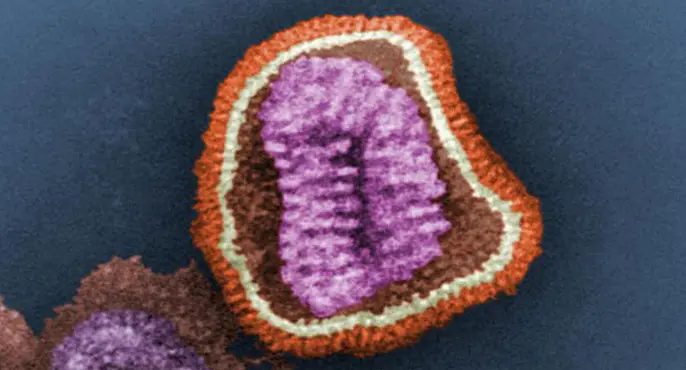Learn About Cold & Flu
History of the Flu
Fever, headache, fatigue. We all know the warning signs of the flu. Today, thanks to improved vaccinations, there's a lot we can do to avoid it. But, this wasn't always the case.

While now we think of the flu as something that keeps us home for a few weeks, the history of the flu has shown a much different story. From the Spanish Flu to the more recent Swine Flu, influenza history has shown how easily viruses can turn into a pandemic when our immune systems aren't prepared.
However, with constant medical advances and more information on how the flu spreads, the world has come a long way in changing the history of the flu.

Spanish Flu (1918 - 1919)
A bit of a misnomer, the Spanish Flu is actually believed to have originated in a small town in Kansas. This pandemic received its name after medical reports stated that nearly 8 million people had passed away from the flu in Spain in May of 1918. Unprecedented in it's time and still one of the world's largest natural disasters, the Spanish Flu spread rapidly due to large troop movement during World War I and killed more people in the two year span of it's height than the entire war. Unique from other strains of flu, the Spanish Flu targeted healthy people between the ages of 15-35. It has been estimated that between 20-40 percent of the world's total population was infected and the final death toll was about 3-5 percent of the world's total population.

Asian Flu (1957 - 1958)
Although relatively mild compared to the Spanish Flu, the Asian flu had an extremely high infection rate. Originating in Asia, the pandemic was first concentrated in school-aged children and later in the elderly. Because people younger than 65 had no immunity to this strain of flu, health officials quickly predicted a pandemic and began vaccine production in May 1957. However, after the strain died down by December 1957, it reemerged in a "second wave" in February 1958 and in total caused 69,800 deaths in the U.S.

Hong Kong Flu (1968 - 1969)
Aptly named, the Hong Kong Flu was first detected in early 1968 in the city of Hong Kong. The virus spread quickly across the globe and was first reported in the U.S. in December 1968. However, this pandemic marked the beginning of global preparedness in influenza history and is known as the mildest flu pandemic in the 20th century. Due to improved medical care and more effective antibiotics, only 33,800 people passed away due to complications from the flu in the U.S., most over the age of 65.

Swine Flu (2009 - 2010)
In spring of 2009, a new H1N1 influenza virus derived from human, swine and avian strains spread quickly across the United States and the world. The CDC reports that between 43 million to 89 million people were infected with the swine flu between April 2009 and April 2010. However due to effective vaccination distribution, only about 274,300 people were infected in the U.S. While in the beginning of the outbreak, vaccinations were in short supply; the CDC first distributed the vaccine to people at the highest risk of complications and later to the wider population.
Additional Flu Strands of Note:
Avian Influenza
Avian Influenza, or more commonly referred to as bird flu, is an infectious viral disease that originates in birds and rarely infects humans. However, certain strands, such as A(H5N1) and A(H7N9), have crossed the species barrier to infect humans and have caused serious infections. The majority of human cases have been attributed to direct contact with infected poultry and there is no evidence that suggests infection can spread through properly cooked food. The fatality rate for bird flu infections in people is
much higher compared to that of the seasonal flu, however, the virus mainly targets those with underlying medical conditions. Because influenza pandemics are widely unpredictable, Avian Influenza maintains pandemic potential because of its prevalence in poultry populations and lack of human immunity.
H3N2v
The CDC is warning that most causes of flu this season will be caused by a strain called H3N2v, a variant virus from Swine Flu. This variant was first detected in humans in 2011, although it was found in pigs in the U.S. in 2010. The symptoms currently reflect those of the seasonal flu, however the CDC maintains concerns because of this virus' ability to more easily spread from pigs to humans than previous strains. Because influenza viruses are constantly changing, it's possible that H3N2v could mutate to spread from person to person more easily, as well. According to CDC research, children born after 2001 have little to no immunity against H3N2v viruses. While the current flu vaccine protects against three strains of flu, it does not protect against H3N2v, although research is underway to create a separate vaccine.
The Flu Today
Medical technology and global preparedness have come a long way since the days of the Spanish Flu. While influenza pandemics are unpredictable, thanks to modern medicine and global communication, they are controllable. In 2015, the CDC expected up to 159 million flu vaccine doses to be available -- a drastic difference from 1918, when there was no flu vaccine or universal treatment plan.
Due to organizations such as the CDC and the World Health Organization, the world now has groups like the Global Influenza Programme, which is designed to provide member states with "strategic guidance, technical support and coordination of activities essential to make their health systems better prepared against seasonal, zoonotic and pandemic influenza threats." While influenza outbreaks are always a cause for concern, increased vaccination and strategic distribution plans have severely shifted the scales.
Read More About How You Can Help Prevent the Flu This Season.





